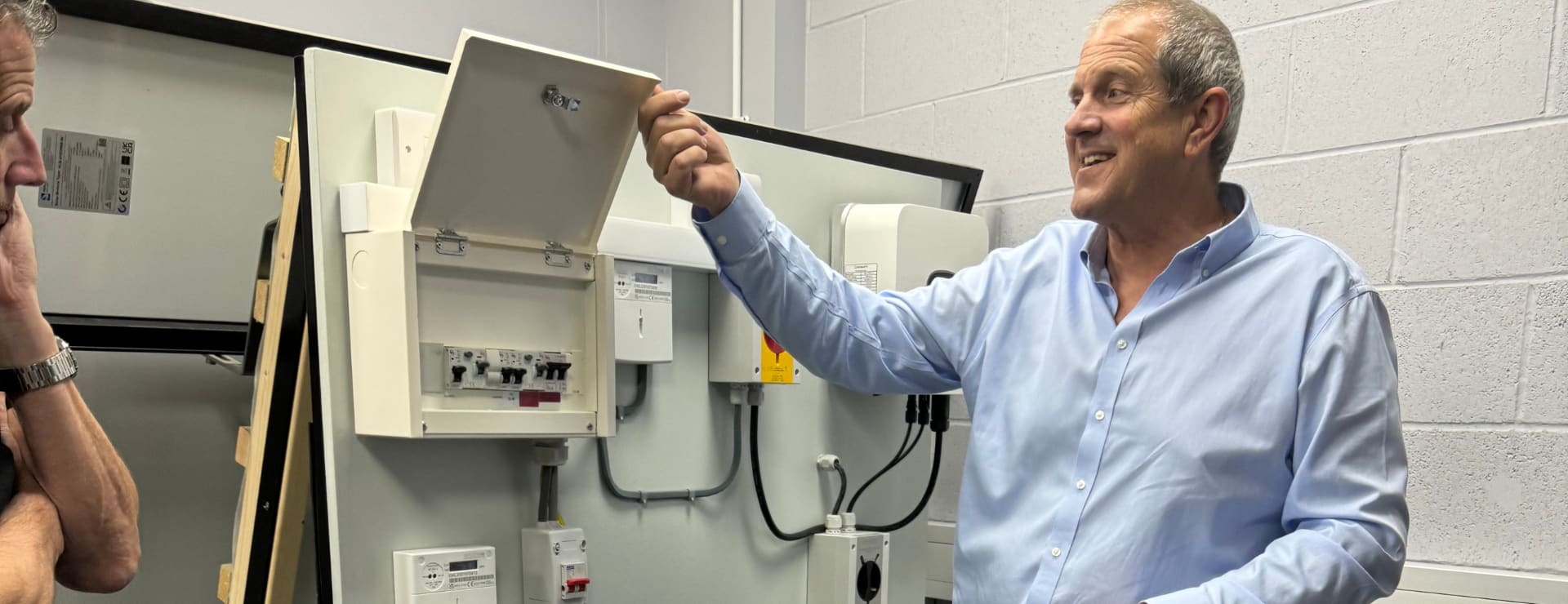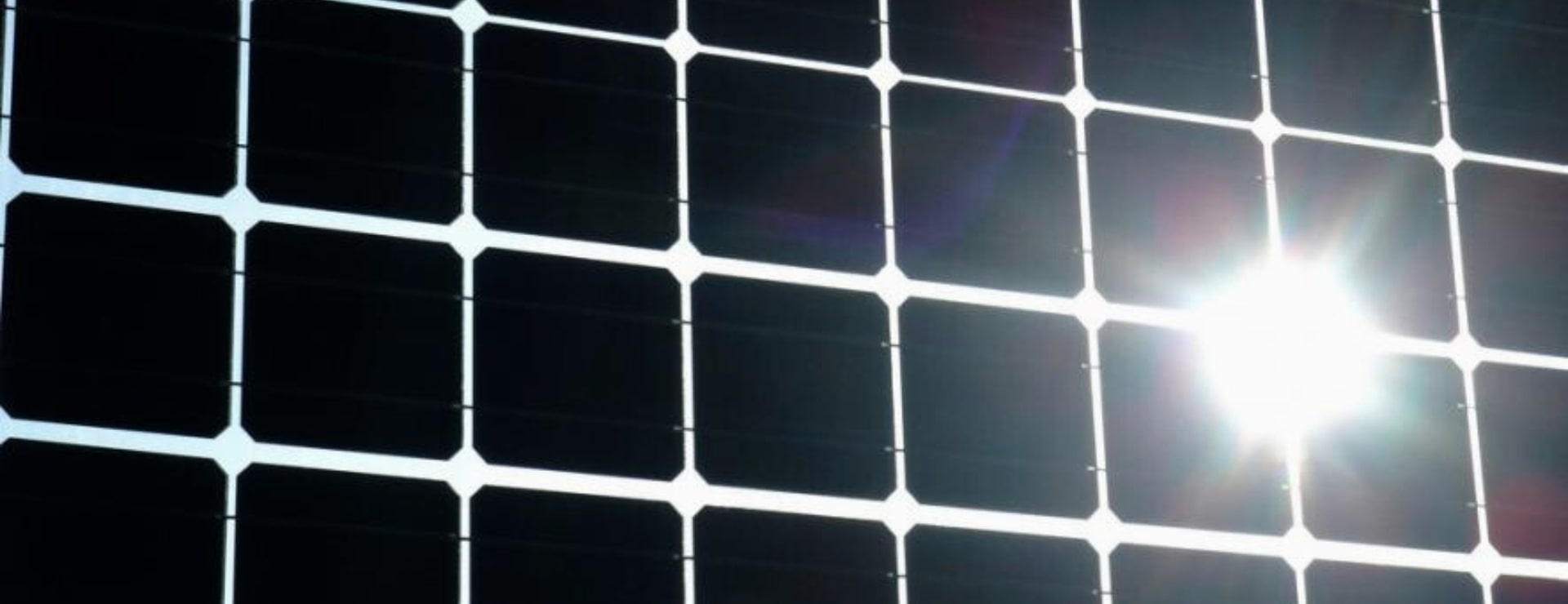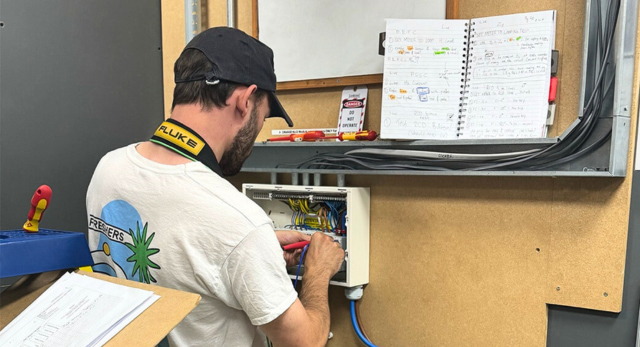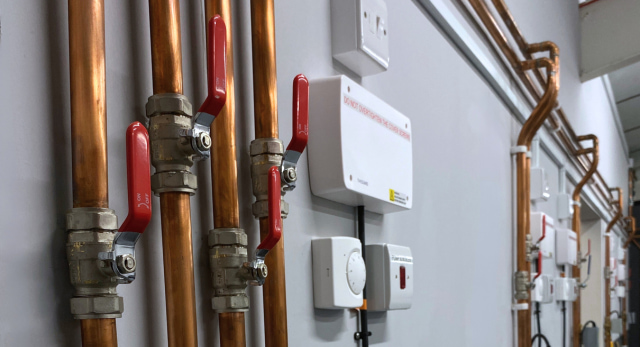As energy costs climb and climate action grows urgent, solar panel installation is becoming the go-to solution for UK homeowners and businesses seeking lasting savings, energy independence, and greener living. This article delivers a clear overview of the entire process, from how solar panels work and their financial benefits, including incentives like the Smart Export Guarantee, to system options suited to UK properties. It explains installation, the importance of choosing accredited professionals, and the role of battery storage in maximising self-sufficiency. Covering planning permission, maintenance, and lifespan, the article empowers you to confidently navigate every step of your solar journey and make a smart investment in your property’s future.
How Does Solar Panel Installation Work?
Here’s the lowdown on the typical solar panel installation process:
1. Site Assessment and Survey
A qualified installer will visit your property to assess your roof’s suitability, orientation, shading, and structural integrity. South-facing roofs with minimal shade are ideal, but east- and west-facing roofs can also work.
2. System Design
Based on your energy needs and roof space, the installer will design a system tailored to you. This includes choosing the right type and number of panels, inverter, and any optional extras like battery storage.
3. Quotation and Approvals
You’ll receive a detailed quote. If you’re happy, the installer will help secure any necessary permissions (like planning permission for listed buildings or conservation areas).
4. Installation Day
Most residential solar panel installation jobs take just 1-2 days. The process involves:
- Mounting the panels securely to your roof
- Wiring the panels to an inverter (which converts DC to AC electricity)
- Connecting the system to your consumer unit (fuse board)
- Testing and commissioning
5. Grid Connection and Certification
Your installer will notify your Distribution Network Operator (DNO) and provide you with the necessary certificates (like MCS and Building Regulations compliance).
Solar Panels Installation: Step-by-Step
A professional solar panel installation is a meticulous, multi-stage process designed to ensure your system is safe, efficient, and built to last. It should be carried out by installers who have had accredited solar pv training but here’s a detailed breakdown of what you can expect:
1. Scaffolding
Before any work begins, scaffolding is erected around your property to provide safe access to the roof for installers. This step is crucial for both safety and efficiency and typically takes about a day to complete. It allows the team to move panels and equipment securely and reduces the risk of accidents during the installation process.
2. Install Roof Mounts
Next, the installers lift select roof tiles to fix anchor points directly to the rafters, ensuring a solid foundation for your solar array. These roof anchors are then used to attach the mounting system, which is designed to withstand severe UK weather and keep your panels secure for decades. The mounting system is carefully aligned to the optimal angle, usually between 18 and 36 degrees, to maximise sunlight exposure and energy production.
3. Fix Panels in Place
Once the mounts are in place, the solar panels are positioned onto the mounting system. Installers initially place the panels without fastening them, allowing for precise adjustments to achieve the best angle and orientation. Once satisfied, they secure the panels with bolts and double-check that everything is tight and stable, ensuring the panels are both secure and optimally positioned for sunlight capture.
4. Link the System
With the panels secured, the next step is wiring. Panels are connected together using MC4 connectors or similar, forming a circuit that links them to the inverter. This stage may involve running cables through the loft or along the roof, and the wiring must be carefully managed to meet safety standards and avoid any risk of water ingress or electrical faults. If your system includes a battery, this is when it’s integrated into the wiring setup.
5. Install the Solar Inverter
The solar inverter is a key component, converting the direct current (DC) produced by your panels into alternating current (AC) that your home can use. Installers typically place the inverter in a cool, dry location like a loft, garage, or utility room. For systems with battery storage, the inverter is connected to both the panels and the battery, allowing seamless energy flow and storage.
6. Integrate with Your Property
Once the inverter is installed, it’s connected to your consumer unit (fuse board), integrating the solar system with your home’s electrical circuits. A generation meter is also installed to monitor how much electricity your panels produce. If you’re exporting surplus electricity to the grid, the installer will ensure the system is compliant with your energy supplier’s requirements.
7. Test and Commission
The final stage involves rigorous testing and commissioning. Installers will turn the system on and off multiple times, checking all connections, monitoring system performance, and ensuring everything operates safely and efficiently. They’ll also walk you through the monitoring system, so you can track your solar generation and savings. Once everything passes inspection, you’ll receive all relevant documentation, including MCS certification and warranty details.
A typical domestic solar panel installation is completed in one to two days, with minimal disruption to your daily life. Professional installers handle every detail, from safety checks to system handover, ensuring your investment delivers clean, reliable energy for years to come.
Building Regulations
All solar panel installation work must comply with UK Building Regulations and electrical safety standards. Make sure your installer is MCS-certified and registers the installation with your local authority.
Why Go Solar? The Benefits of Solar Panel Installation
Let’s cut to the chase. Why should you consider solar panel installation?
- Slash Your Energy Bills: Solar panels generate free electricity from sunlight, reducing your reliance on the grid and saving you money.
- Reduce Your Carbon Footprint: Solar is clean, green, and renewable. No emissions, no guilt.
- Increase Property Value: Homes with solar panels are more attractive to buyers and can command higher prices.
- Government Incentives: Schemes like the Smart Export Guarantee (SEG) pay you for surplus electricity you export back to the grid.
- Energy Independence: Take control of your energy future and worry less about price hikes.
Types of Solar Panels
When it comes to solar panels, you’ve got options. Here are the main types:
- Monocrystalline Panels: High efficiency, sleek black finish, slightly pricier.
- Polycrystalline Panels: Lower cost, blue tint, a bit less efficient.
- Thin-Film Panels: Flexible and lightweight, but generally less efficient and not as common for UK homes.
How Much Does it Cost to Install Solar Panels
Costs vary depending on system size, type of panels, and complexity of the installation. As a ballpark:
- Typical 4kW system: £5,000–£7,000 (including VAT and installation)
- Larger or commercial systems: £10,000 and up
Remember, you’ll start saving on your energy bills from day one, and most systems pay for themselves in 6–10 years.
Solar Panel Installation for Homes vs. Businesses
| Feature | Residential Solar Panels Installation | Commercial Solar Panels Installation |
|---|---|---|
| Typical System Size | 2–6 kW | 10 kW+ |
| Installation Time | 1–2 days | 1 week+ |
| Incentives | SEG, VAT relief | SEG, capital allowances |
| ROI Timeframe | 6–10 years | 4–8 years |
| Complexity | Lower | Higher (may involve flat roofs, larger arrays, etc.) |
Solar Panels and Battery Storage
Why Pair Solar Panels with Battery Storage
Adding battery storage to your solar panel installation is a game-changer for energy independence and efficiency. Solar panels generate electricity during daylight hours, but without a battery, any excess energy you produce is exported back to the grid, often at a lower rate than what you pay to buy it back later. With a battery system, you can store this surplus electricity for use in the evenings, overnight, or during grid outages, maximising your self-consumption and reducing your reliance on the grid.
How Does Solar Battery Storage Work
- Energy Capture: Your solar panels convert sunlight into electricity. During sunny periods, your panels may generate more power than your home needs.
- Storage: Instead of exporting excess electricity to the grid, a battery stores it for later use. Perfect for those cloudy days or after dark.
- Usage: When your panels aren’t generating enough (think evenings or British weather), your home draws power from the battery first, before tapping into the grid.
- Back-Up Power: Many battery systems provide backup power during outages, keeping essentials like lights and Wi-Fi running even if the grid goes down.
Types and Placement of Batteries
Most domestic batteries are lithium-ion, offering high energy density, long lifespan, and smart monitoring features (often via an app). They’re usually installed close to your consumer unit, in a cupboard, utility room, loft, or garage, and should be kept well-ventilated and out of direct sunlight for safety and efficiency.
Capacity and Sizing
Battery capacity is measured in kilowatt-hours (kWh). A typical UK home battery stores 5–20 kWh, with larger homes or those aiming for greater off-grid capability opting for the higher end. The right size depends on your energy usage and how much solar surplus you generate.
Financial and Environmental Benefits
- Lower Bills: Use more of your own solar power and buy less from the grid.
- Time-of-Use Savings: Charge your battery when electricity is cheap (or free from your panels) and use it during peak-rate periods.
- Sustainability: Reduce your carbon footprint by maximising the use of clean, renewable energy.
- Incentives: As of February 2024, there’s 0% VAT on battery installations, making it more affordable to add storage to new or existing solar PV systems.
Considerations
- Maintenance: Batteries are generally low-maintenance but should be checked periodically and kept accessible for servicing.
- Expansion: If you plan to add more batteries in the future, ensure your installation space allows for this.
- Lifespan: Most lithium-ion batteries last 10–15 years, after which their capacity may decline.

Solar Panel Maintenance and Lifespan
How Long Do Solar Panels Last
Modern solar panels are built to last, with most manufacturers offering warranties of 20–25 years. In practice, quality panels can keep generating electricity for 25–30 years or more. The main thing to note is a gradual reduction in output. Most panels will still produce 80–87% of their original power after 25 years, thanks to a low annual degradation rate (typically 0.5–0.8%).
- Monocrystalline panels: Often last 30+ years, sometimes up to 40.
- Polycrystalline panels: Typically 25–30 years.
- Thin-film panels: Shorter lifespan, around 10–20 years.
Routine Maintenance: What’s Needed?
Solar panels are famously low-maintenance, but a little TLC goes a long way:
- Visual Inspections: Check for dirt, debris, bird droppings, or visible damage every few months. If necessary, use binoculars from the ground to see in more detail.
- Cleaning: In most UK locations, rain does much of the work. If panels get particularly dirty (near trees, in dusty areas, or due to birds), gently rinse with a hose or use a soft brush. Avoid pressure washers and detergents, which can damage the panels or void warranties.
- Vegetation Management: Trim back overhanging branches and keep climbing plants at bay to avoid shading and physical damage.
- Pest Control: Watch for signs of birds or squirrels nesting under panels. Consider mesh netting if this becomes an issue.
- Performance Monitoring: Use your system’s monitoring tools to track daily output. A sudden drop in generation is a red flag and you need to investigate this promptly.
- Professional Servicing: Have your system professionally inspected every 5–10 years, or sooner if you notice issues. Inverters typically need replacing after 10–15 years.
Maintenance Logbook
Keep a record of all inspections, cleaning, repairs, and replacements. This helps with troubleshooting, warranty claims, and resale value.
End of Life and Recycling
When panels reach the end of their useful life, they don’t become landfill. Many are recycled or repurposed for lower-demand applications, such as powering sheds or garden lights.
For more on system care, see our Electrical Courses and maintenance tips on our blog.
How to Choose a Solar Panel Installation Company
Qualifications and Certification
- Solar PV Qualification: Firstly, it is important to check to see if the installation company holds a Solar PV qualification like the one we run at Logic4training.
- MCS Certification: In the UK, always choose an installer accredited by the Microgeneration Certification Scheme (MCS). This ensures your installation meets industry standards and qualifies for government incentives like the Smart Export Guarantee. It is also important to check if the installers are under an umbrella scheme, if they aren’t MCS registered.
- RECC and HIES Membership: Look for membership in the Renewable Energy Consumer Code (RECC) or the Home Insulation & Energy Systems Quality Assured Contractors Scheme (HIES) for added consumer protection.
- Part P Approval: For electrical safety and Building Regulations compliance, check for Part P approval.
Experience and Reputation
When choosing a solar panel installation company, it’s essential to consider both experience and reputation. Opt for a company with several years of experience and a robust portfolio of completed installations, as this demonstrates reliability and expertise; don’t hesitate to ask for case studies or photos of previous projects to gauge their capabilities.
Additionally, take the time to read independent customer reviews on platforms like Trustpilot, Google, or social media. Consistent positive feedback is a strong indicator of quality service, while any recurring complaints about poor communication or aftercare should raise concerns. Established firms such as Geo Green Power, with over 14 years in the industry and major projects under their belt, and highly rated companies like Soly and Evergreen Power, are recognised for their impressive track records and customer satisfaction, as reflected in their high Trustpilot scores and glowing testimonials.
Transparency and Service
- Detailed Quotes: Expect a clear, itemised quotation outlining all costs and services. Avoid companies with vague pricing or high-pressure sales tactics.
- Warranties: Check what’s covered and for how long. Look for long product and workmanship warranties (some top installers offer up to 30 years on panels).
- Aftercare: Reliable installers offer ongoing support, monitoring, and maintenance packages.
Accreditations and Industry Standing
- Check for MCS, HIES, NAPIT, and EPVS accreditations: These signal quality and compliance with UK standards.
- Avoid fly-by-nights: The solar industry has seen companies come and go. Choose an installer with financial stability and a long-standing reputation.
For more on training and standards, see our Solar PV Training Courses.
Planning Permission
Permitted Development Rights
In most cases, installing solar panels on your home is considered “permitted development” and does not require planning permission, provided certain conditions are met:
- Panels must not protrude more than 20cm from the roof or wall surface.
- The highest part of the panels must not be higher than the highest part of the roof (excluding chimneys).
- Panels should be sited to minimise their visual impact and removed when no longer needed.
When Planning Permission is Required
Planning permission for solar panel installation is typically required if your property is a listed building or within the grounds of one, or if you live in a conservation area, Area of Outstanding Natural Beauty, or World Heritage Site and wish to install panels on a wall facing a road or closer to a highway than the house itself.
You’ll also need permission if you want to install ground-mounted panels that exceed specific size or height limits, or if there’s already a ground-mounted system on your property. Additionally, if your planned installation does not meet permitted development criteria, such as panels being too large or not flush with the roof, formal permission will be necessary.
How to Check
Always check with your local planning authority if you’re unsure, especially for non-standard installations or if your property is in a sensitive area. Regulations can change, and local councils may have additional requirements.
Cloudy Days
Absolutely! Solar panels do work on cloudy days, though their output is reduced compared to bright, sunny weather.
How Do They Work When There is Cloud?
- Daylight, Not Just Sunlight: Solar panels generate electricity from all visible light, not just direct sunshine. Even when it’s overcast, enough light penetrates the clouds to produce power.
- Typical Output: On a cloudy day, panels usually generate 10–25% of their usual output, depending on cloud thickness and panel technology.
- Panel Type Matters: Monocrystalline panels are generally more efficient in low-light conditions than polycrystalline panels. Thin-film panels also perform relatively well under diffuse light.
- The Edge-of-Cloud Effect: Sometimes, sunlight magnified at the edge of clouds can briefly boost output above normal levels.
Rain and Snow
Rain doesn’t stop panels from working. In fact, it helps keep them clean. Light snow can still allow some generation, though heavy snow cover will reduce output until it slides off.
Location and Investment
Even famously overcast places (think Manchester or Glasgow) can benefit from solar, especially with modern, high-efficiency panels. The UK’s overall solar potential is surprisingly strong, especially in the south.
Going Off-Grid
Going fully off-grid with solar panels in the UK is possible, but it’s a serious undertaking that requires careful planning, substantial investment, and lifestyle adjustments.
What’s Involved?
- System Size: To meet 100% of your energy needs, you’ll need a large solar array (often 16+ panels for an average family home), a sizeable battery bank (typically 12–13 kWh or more), and possibly supplementary sources like wind turbines or a backup generator for winter months.
- Space Requirements: You’ll need enough roof or land space for the panels (20–40 square metres for a typical home).
- Cost: Expect to invest £26,000–£45,000 or more for a fully off-grid setup, including panels, batteries, and backup systems. Annual maintenance and backup connection fees may apply if you keep a grid link as a fallback.
- Energy Management: Off-grid living requires careful energy budgeting, especially in winter when solar generation drops. Insulation, energy-efficient appliances, and sometimes backup generators are essential.
Partial Off-Grid Solutions
Most UK homes with solar panels remain grid-connected, using battery storage to maximise self-consumption and only drawing from the grid when necessary. This hybrid approach offers the best of both worlds: lower bills, energy security, and the ability to sell surplus power back to the grid.
Off-Grid Communities
There are off-grid communities in the UK, like Tinkers Bubble in Somerset and Lammas Eco Village in Wales, showcasing sustainable, self-sufficient living powered by solar, wind, and hydro.
Is It Worth It
Going off-grid can be rewarding and eco-friendly, but it’s not for everyone. For most, a grid-tied system with battery storage offers the best balance of savings, sustainability, and convenience.
Ready to Make the Switch?
Choosing solar panels is more than just a way to cut your energy bills. It’s a genuine investment in your property, your future, and the planet. Whether you’re motivated by the promise of lower costs, energy independence, or a greener lifestyle, solar power offers a practical, proven solution for UK homes and businesses alike.
At Logic4training, we’re passionate about helping you navigate every step of your solar journey, from understanding the basics to choosing the right installer and even upskilling with our Solar PV and Battery Storage training courses. Our expert team is here to demystify the process, answer your questions, and ensure your installation is safe, compliant, and built to last.
If you’re ready to start reaping the rewards of solar, there’s never been a better time. With government incentives, advanced battery storage options, and robust UK standards, solar panel installation is more accessible and beneficial than ever. Explore our renewables blog for more tips, or get in touch to find out how you can take the next step towards sustainable energy.
Shine brighter, save smarter, and join the thousands of UK households and businesses already enjoying the benefits of solar. The future’s looking sunny-let’s make it yours!
FAQs
How long does a solar panel installation take?
Most residential solar panel installations are completed within one to two days, with minimal disruption to your routine. The process involves mounting the panels on your roof, installing the inverter (usually in your loft or garage), and carrying out the internal wiring to connect your new solar PV system to your home’s existing electrics. Scaffolding is typically put up a few days before the installation and removed soon after the work is complete. While the physical installation is quick, the overall timeline can be affected by factors such as the District Network Operator (DNO) application process and the availability of installation teams in your area, which may mean waiting a bit longer during busy periods.
What’s the typical payback period for solar panels?
The payback period for solar panels in the UK generally ranges from 6 to 10 years, depending on the size of your system, your household’s energy consumption, the amount of sunlight your property receives, and current electricity prices. Government incentives, such as the Smart Export Guarantee (SEG), allow you to earn money by exporting surplus electricity back to the grid, which can help you recoup your investment faster. After the payback period, the electricity your panels generate is essentially free, leading to significant long-term savings.
Do solar panels need a lot of maintenance?
Solar panels are designed to be low-maintenance. Most systems require only occasional visual inspections to check for dirt, debris, or damage, and rain usually keeps panels clean if they’re installed at an angle of more than 15 degrees. However, it’s recommended to have a professional solar engineer check and service your panels every two years. This service includes inspecting the panels for cracks or chips, checking all wiring and connections for security and rust, monitoring performance for any sudden drops, and ensuring there’s no new shading from overgrown trees or nearby buildings. Regular maintenance helps spot issues early and keeps your panels operating efficiently.
Can I install solar panels myself?
While DIY solar panel kits exist, it’s strongly advised to use a professional, MCS-certified installer. Professional installation ensures your system is safe, compliant with UK Building Regulations, and eligible for incentives like the SEG. Installers have the expertise to assess your roof’s suitability, securely mount the panels, handle all electrical connections, and provide you with the necessary certification and warranties. Attempting a DIY installation risks safety hazards, potential damage to your home, and may void warranties or make you ineligible for export payments.
Are there grants or incentives for solar panel installation?
Yes, there are several incentives available for UK homeowners and businesses installing solar panels. The Smart Export Guarantee (SEG) pays you for any surplus electricity you export to the grid. Additionally, as of 2024, there is 0% VAT on the installation of solar panels and battery storage systems, making it more affordable to go solar. While there are currently no direct government grants for solar PV, these incentives, combined with long-term savings on your energy bills, make solar panel installation a financially attractive option.










